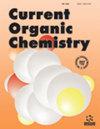作为拟抗 CETP 药物的正氟化苯磺酰胺的合成和室内研究
IF 2.1
3区 化学
Q3 CHEMISTRY, ORGANIC
引用次数: 0
摘要
:心血管疾病是导致死亡的主要原因之一。动脉粥样硬化会造成动脉收缩或阻塞,从而导致心脏病发作或中风。胆固醇酯转移蛋白(CETP)是一种有助于胆固醇逆向运输的蛋白质。它能促进胆固醇酯从高密度脂蛋白转移到低密度脂蛋白和超低密度脂蛋白。因此,通过药物抑制 CETP 可以减少低密度脂蛋白,增加高密度脂蛋白胆固醇,从而限制心血管疾病的发生。本研究制备了 10 个正氟取代的苯磺酰胺类化合物 6a-6j,并使用 1H NMR、13C NMR、HR-MS 和 IR 全面测定了它们的结构。体外生物学评价结果表明,化合物 6d 的抑制活性最高,抑制率达 100%,而化合物 6a-6c 和 6e-6j 在 10 μM 浓度下的活性为 29% - 83%。有趣的是,对位取代衍生物(6d、6g 和 6j)的 CETP 抑制活性高于其正交和偏交类似物,而与取代基的性质(即 CH3、Cl 或 NO2)无关。Ligandfit docking 实验揭示了合成化合物在结合模式上的差异,这反映在它们的 CETP 抑制活性上:心血管疾病是导致死亡的主要原因之一。动脉粥样硬化会造成动脉收缩或阻塞,从而导致心脏病发作或中风。胆固醇酯转移蛋白(CETP)是一种有助于胆固醇逆向运输的蛋白质。它能促进胆固醇酯从高密度脂蛋白转移到低密度脂蛋白和超低密度脂蛋白。因此,通过药物抑制 CETP 可降低低密度脂蛋白胆固醇,增加高密度脂蛋白胆固醇,从而限制心血管疾病的发生。 方法:使用 1H-NMR、13C-NMR、HR-MS 和 IR 全面测定了它们的结构:Ligandfit docking 实验表明,合成的化合物之间的结合模式存在差异,这反映在它们对 CETP 的抑制活性上。本文章由计算机程序翻译,如有差异,请以英文原文为准。
Synthesis and In-Silico Studies of Ortho-Fluorinated Benzenesulfonamides as Putative Anti-CETP Agents
: Cardiovascular disease is one of the primary causes of death. Atherosclerosis produces artery constriction or obstruction, which can lead to a heart attack or stroke. Cholesteryl Ester Transfer Protein (CETP) is a protein that aids in reverse cholesterol transport. It promotes cholesteryl ester transfer from HDL to LDL and VLDL. So, inhibition of CETP by drugs limits cardiovascular disease by decreasing LDL and increasing HDL cholesterol. In this study, ten ortho-fluoro substituted benzenesulfonamides 6a-6j were prepared, and their structure was fully determined using 1H NMR, 13C NMR, HR-MS, and IR. In vitro biological evaluation showed that compound 6d has the highest inhibitory activity with 100% inhibition, while compounds 6a-6c and 6e-6j had activities ranged from 29% - 83% at 10 μM concentration. Interestingly, para-substituted derivatives (6d, 6g, and 6j) were observed to have greater CETP inhibitory activities than their ortho- and meta- analogues irrespective to the nature of substituent, i.e., CH3, Cl, or NO2. Ligandfit docking experiment revealed the difference in the binding mode among the synthesized compounds, which is reflected in their CETP inhibitory activity. background: Cardiovascular disease is one of the primary causes of death. Atherosclerosis produces artery constriction or obstruction, which can lead to a heart attack or stroke. Cholesteryl ester transfer protein (CETP) is a protein that aids in reverse cholesterol transport. It promotes cholesteryl ester transfer from HDL to LDL and VLDL. So, inhibition of CETP by drugs limits cardiovascular disease by decreasing LDL and increasing HDL cholesterol. method: and their structure was fully determined using 1H-NMR, 13C-NMR, HR-MS, and IR. conclusion: Ligandfit docking experiment revealed the difference in the binding mode among the synthesized compounds which is reflected on their CETP inhibitory activity.
求助全文
通过发布文献求助,成功后即可免费获取论文全文。
去求助
来源期刊

Current Organic Chemistry
化学-有机化学
CiteScore
3.70
自引率
7.70%
发文量
76
审稿时长
1 months
期刊介绍:
Current Organic Chemistry aims to provide in-depth/mini reviews on the current progress in various fields related to organic chemistry including bioorganic chemistry, organo-metallic chemistry, asymmetric synthesis, heterocyclic chemistry, natural product chemistry, catalytic and green chemistry, suitable aspects of medicinal chemistry and polymer chemistry, as well as analytical methods in organic chemistry. The frontier reviews provide the current state of knowledge in these fields and are written by chosen experts who are internationally known for their eminent research contributions. The Journal also accepts high quality research papers focusing on hot topics, highlights and letters besides thematic issues in these fields. Current Organic Chemistry should prove to be of great interest to organic chemists in academia and industry, who wish to keep abreast with recent developments in key fields of organic chemistry.
 求助内容:
求助内容: 应助结果提醒方式:
应助结果提醒方式:


